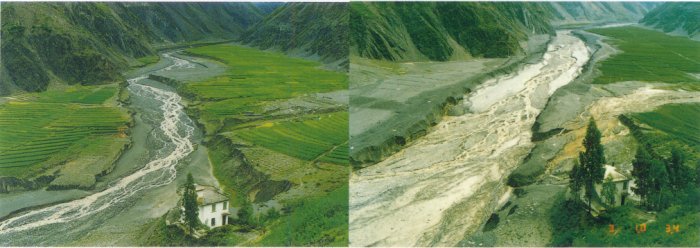

 |
| Photo 1. Debris flow runhing down Jiangjia Gully. The left is the photo on 13 August 1991 and the right on 4 August 1998. |
 |
| Photo 2. Drastic change in the channel topography by debris-flow repetition. The left id the photo on 20 August 1993, and the right on 3 August 1998. |

